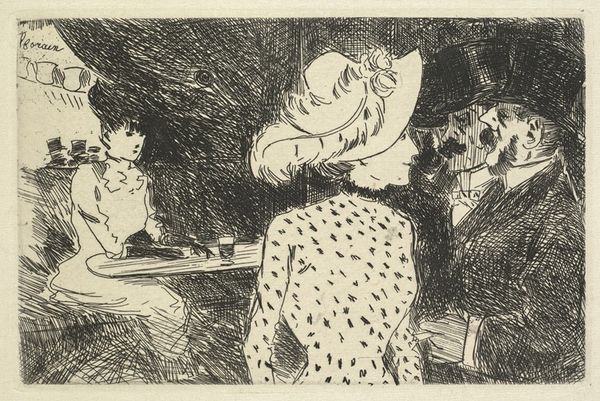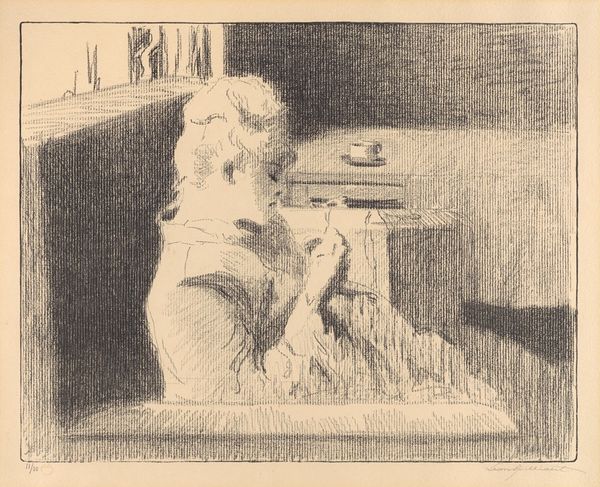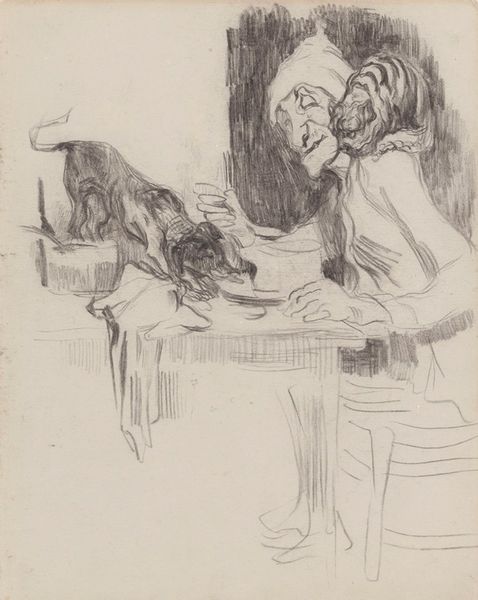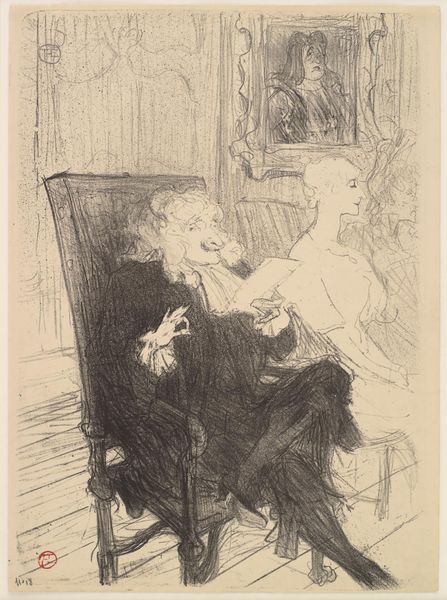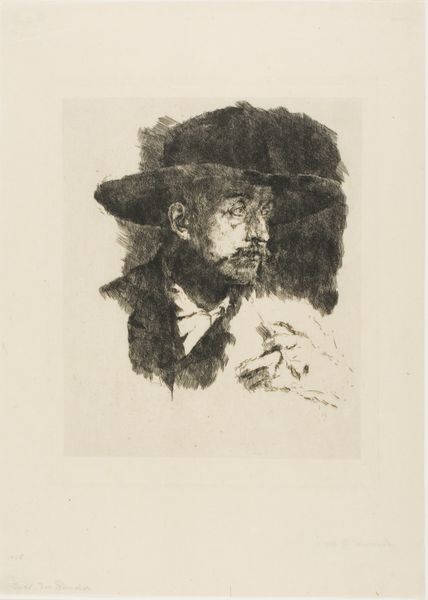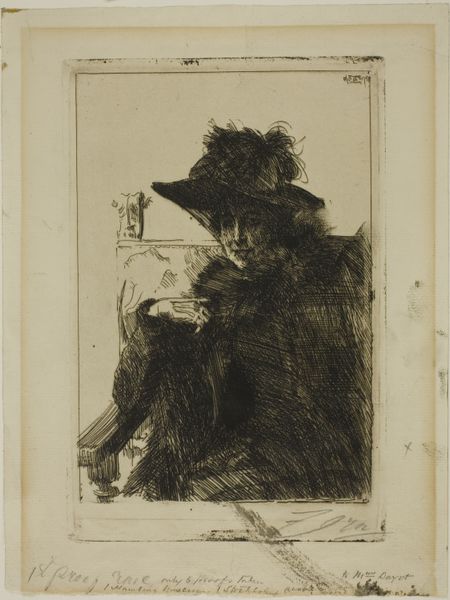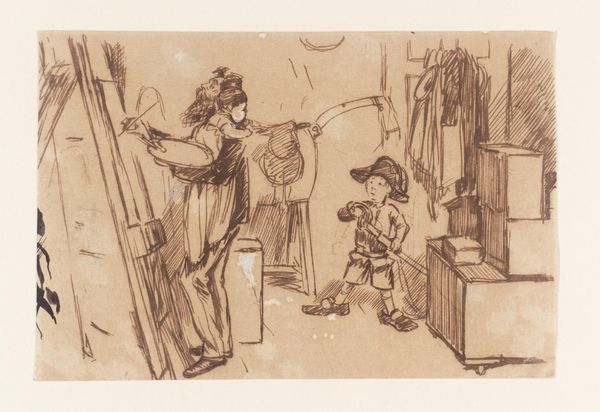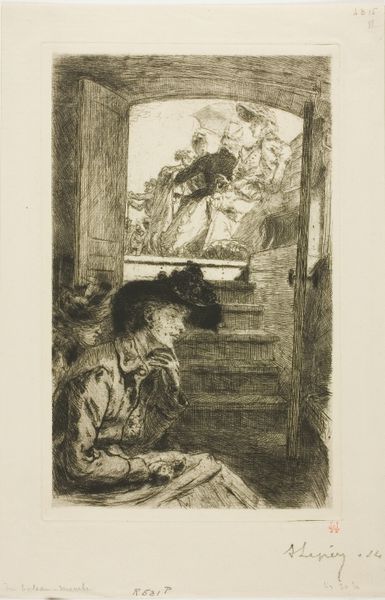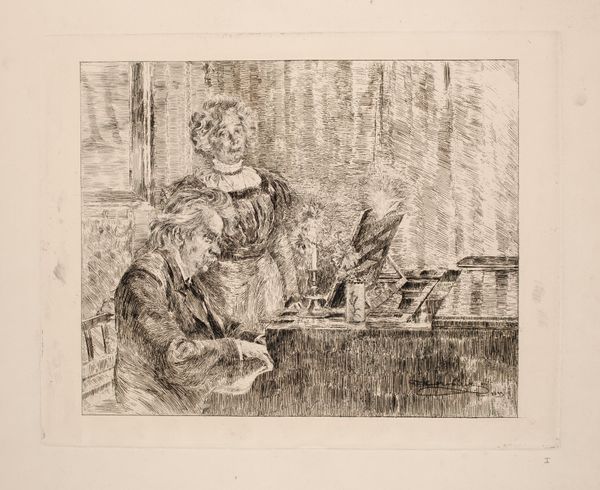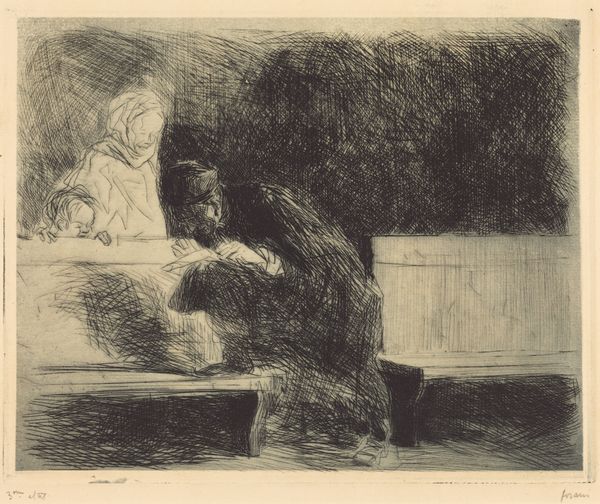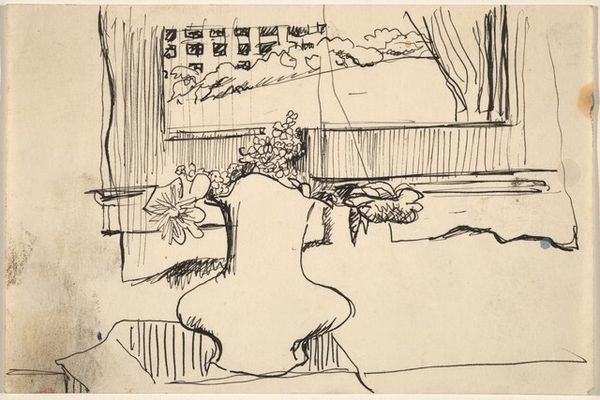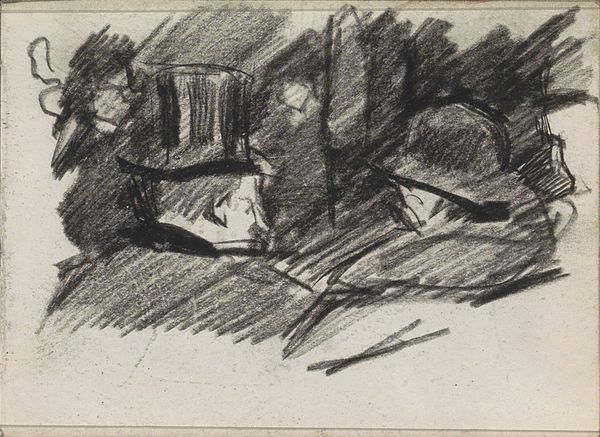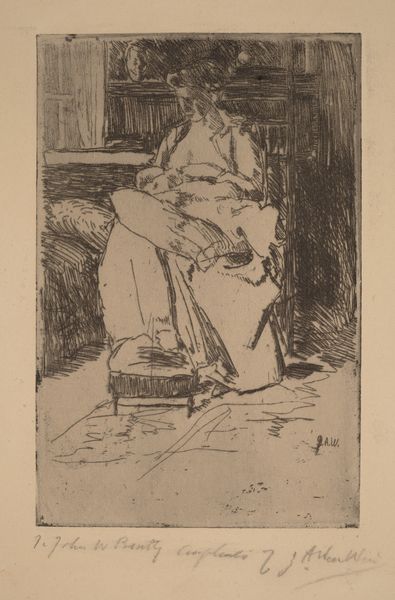
Whistler drawing Poynter; back view of a man seated at a table near a lighted lamp 1860
0:00
0:00
Copyright: Public Domain: Artvee
Editor: Here we have James McNeill Whistler's "Whistler drawing Poynter; back view of a man seated at a table near a lighted lamp" from 1860, rendered in ink. It’s striking how stark the figure is on the right, almost consumed by shadow, contrasted against the light detailing on the left side. What do you make of the materiality here? Curator: I'm particularly drawn to the use of ink—such an accessible and relatively inexpensive material. In a rapidly industrializing society, the means of artistic production become key. Ink, easily mass-produced, democratized artmaking to some extent. Notice also how the ‘sketch’ aesthetic defies the highly polished finish prized by academic art. Whistler's choice of process challenges those traditional hierarchies of value. What do you think Whistler might be trying to say about labor and the art world here? Editor: Hmm, it seems to make the labor visible. Was it common to depict artists at work in this way? I'm also curious, how does the setting play into this materialist interpretation? The scene feels so intimate. Curator: The depiction of artists working was certainly gaining traction, connecting the *process* of creation to the final product. In that period the setting is revealing too: interiors were becoming more domestic and artificial, mediated by lamp light. Consumption moved indoors, and ink became a way of ‘capturing’ that transformed, artificial environment and its inhabitants. Do you agree it’s possible to think of ink in relation to other contemporary industrial materials? Editor: That's fascinating; it's like the intimacy isn’t just aesthetic but tied to new means of production. So it is related to materiality itself, with ink and lampshades emerging from related production. Curator: Exactly! This piece underscores the intrinsic link between artistic expression, labor, and the ever-changing material conditions of the time. Editor: I'll definitely look at 19th century works with a different perspective now. Thanks for illuminating this sketch with those materialist considerations.
Comments
No comments
Be the first to comment and join the conversation on the ultimate creative platform.
